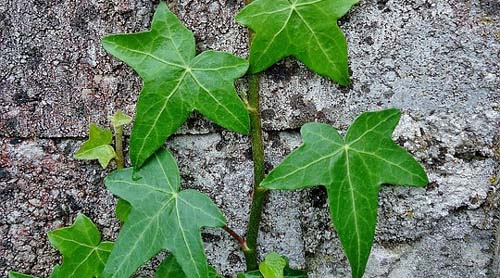We all know that trees and fresh air go hand-in-hand, but did you know that your houseplants can improve the quality of the air in your home?
This is actually legit. Back in the 1980’s, NASA conducted a clean air study which found that certain common indoor house plants could provide a natural way of eliminating toxic agents from our environment; a handy thing to know when you’re up in a space station without much natural fresh air. They also do the standard plant thing of removing carbon dioxide and producing oxygen.
Here are five plants that you might want to add to your home decor to help purify your living space:
Mother in law’s tongue/Snake plant (Sansevieria trifasciata ‘Laurentii’)
 Nicknamed for it’s sharp leaves, this hardy houseplant filters out benzene (found in gasoline and cigarette smoke), formaldehyde (found in building materials and household cleaning products), trichloroethylene (found in paints and paint removers), xylene and toluene (found in nail polish, glues/adhesives and wood stains).
Nicknamed for it’s sharp leaves, this hardy houseplant filters out benzene (found in gasoline and cigarette smoke), formaldehyde (found in building materials and household cleaning products), trichloroethylene (found in paints and paint removers), xylene and toluene (found in nail polish, glues/adhesives and wood stains).
It can grow well in low light conditions so this is a good one for rooms that don’t get too much sun.
English/Common Ivy (Hedera helix)
 Often found in gardens and growing across house walls where it can be difficult to control, ivy looks great indoors – especially trailing from a pot in the bathroom.
Often found in gardens and growing across house walls where it can be difficult to control, ivy looks great indoors – especially trailing from a pot in the bathroom.
Studies have also shown that it can get rid of airborne fecal-matter particles. Think we can safely say we don’t want to be inhaling those…
Aloe vera
 Known for its spiny succulent leaves and soothing healing properties, Aloe plants love sunny spots around your home.
Known for its spiny succulent leaves and soothing healing properties, Aloe plants love sunny spots around your home.
In return for keeping it alive, it will help remove benzene and formaldehyde from your home’s air.
Spider plant (Chlorophytum comosum)
 These plants are resilient (translation: hard to kill), great at filtering formaldehyde out of the environment and are safe for pets.
These plants are resilient (translation: hard to kill), great at filtering formaldehyde out of the environment and are safe for pets.
It’s also got cute wee white flowers as an added bonus if you take care of it well.
Peace lily (Spathiphyllum ‘Mauna Loa’)
 Easy to grow and commonly found in many households, this plant filters out a range of toxins from the air including benzene, formaldehyde, trichloroethylene, xylene, toluene and ammonia. The Peace Lily has flowers that look pretty nice too 🙂
Easy to grow and commonly found in many households, this plant filters out a range of toxins from the air including benzene, formaldehyde, trichloroethylene, xylene, toluene and ammonia. The Peace Lily has flowers that look pretty nice too 🙂
It’s mildly toxic to pets and humans, so make sure it stays out of reach from animals and children.
Images / Flickr (Mother in law’s tongue – Marissa Anderson, Spider Plant – Ryan Somma), Pixabay (Peace Lily)

